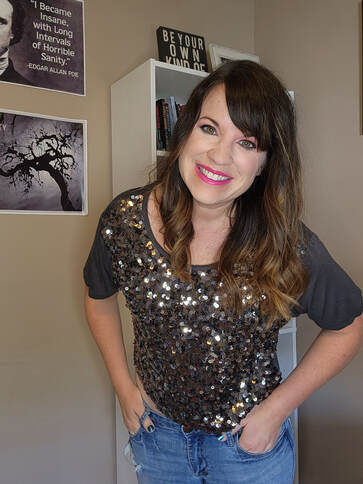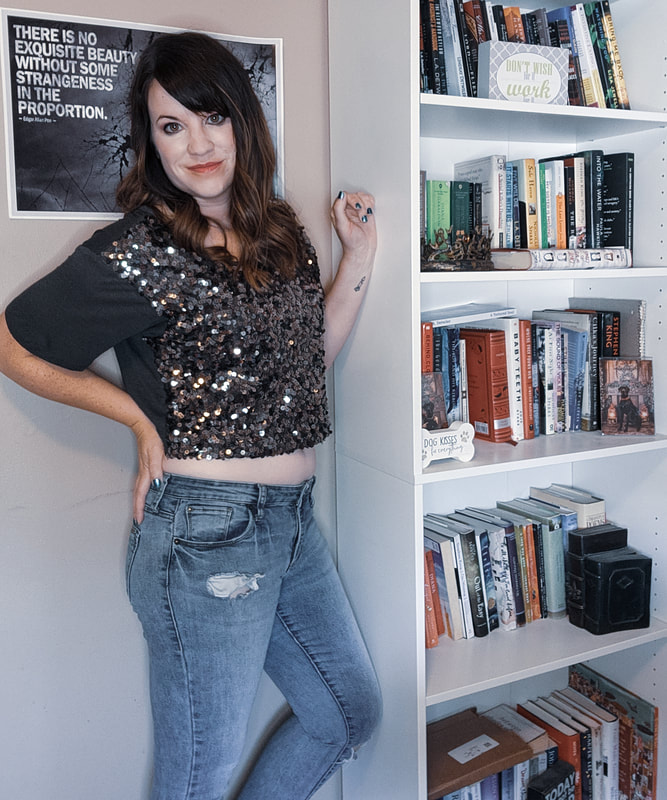|
Yes, ‘Elder’ Millennial, You Need a Crop Top Last week, I was scrolling TikTok to catch up on the Eras tour (My nightly pre-bedtime habit. I know, screens are bad before bed. But it’s my Eras era, so what can I say?) when I came across one of the many “millennial makeover” TikToks that have been popping up on my feed. The Gen Z expert helped the millennial trade her oversized cardigan, skinny jeans, and long cami for an updated look—which included a crop top. And for all the ladies in the room in their thirties or beyond, cue the gasp. Right? For as long as I can remember, the word “crop top” has been synonymous with an expletive. “I haven’t found anything in the stores lately. It’s all just crop tops,” my friends and I complain over and over. We try on shirts that hit just at the top of our jeans and tug on them, explaining that they're just not long enough. We pile into the oversized shirts, the long cardigans. We hide, we cover, we camouflage and talk about how showing too much skin just isn’t right. But as I scrolled past makeover over makeover to get back to my Taylor fix, one TikTok popped up in the same vein that gave me pause. In this Tiktok, she explained why millennial fashion is what it is. She talked about how our generation grew up with mothers who were self-conscious about weight and body image—and many of them passed that body shame onto us. So, we turned to oversized flannels, long shirts, and anything that would cover up our rolls, lumps, and bumps that we found to be embarrassing. Even though my eyelids were heavy, I popped right awake. Because up until that point in my thirty-five years, I just thought we picked our clothes because they looked good on us. I thought the crop top was just an unstylish rebellion against our generation’s long shirts and that it wasn’t something we wanted to pull off. But maybe, just maybe, I considered—our aversion to the crop top is much deeper. Maybe it has to do with our need to be covered, not for ourselves but for others. It’s a symbol of the body expectations put on us that we still accept as truth. The crop top, in essence, exposes not bodies or skin—it exposes our deep fears and self-consciousness about bodies we were told weren’t good enough. Not Skinny Enough I’ll admit—I do own one single crop top. (Why does that still feel like a confession I should be saying in a little cubicle to a priest and following with acts of penance?). It’s sequined and flashy. My husband found it at a consignment shop, thinking it would be a perfect Eras Tour top. It was five dollars, so I tried it on. Staring in the mirror at my exposed stomach, right in the section I was always told was the “area you never wanted to stick out,” I saw nothing but hateful words staring back at me. Fat. Oozing. Pudgy. Unattractive. I quickly took the top of, sighing. Still, I bought it because it was only five dollars, thinking I could layer a cami under it (We love our camis, don’t we, millennials?) or lose enough weight to make myself feel good in it. And there it is. The true sentence that should make me actually feel guilty—guilty for being so horrible to myself. Because even at thirty-five, when I thought I’d worked through so many of my issues, the truth still sticks. I don’t feel skinny enough to rock a crop top. I still think I have to hit a certain weight or a certain level of flatness to deserve to wear a crop top. The sequined crop top hangs in my closet still, mocking me every day. Did you lose enough weight yet? Is your stomach flatter? Did you pass on the cake so you can maybe wear me next month? The questions stir, and the shame stirs with it. But that single TikTok made me consider what it would take to make the crop top stop taunting me. Changing the Narrative |
L.A. DetwilerUSA TODAY Bestselling Thriller author with Avon Books (HarperCollins), The Widow Next Door, The Diary of a Serial Killer's Daughter, and other creepy thriller books Categories
All
|
Proudly powered by Weebly



 RSS Feed
RSS Feed